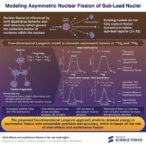
The bark stripped from these trees could produce biopharmaceuticals. [Getty/ Westend61]
Although a casual observer just sees the bark on a tree, a lumber expert might envision the potential for boards inside, thinking of the bark largely as waste. In many cases, bark does turn into waste in the logging industry. That’s lots of waste, because bark can account for up to 15% of a tree’s weight, and “only a fraction of this is currently being utilized, primarily for landscaping or for energy; the rest is left at the harvest or handling site to naturally decompose,” according to Sumanth Ranganathan, Dr.-Ing, a biochemical engineer at Scion, a research institute in Rotorua, New Zealand, and his colleagues. For some trees, though, that wasted bark is a potential treasure-trove of biopharmaceuticals, from anti-inflammatories to cancer-fighting drugs.
In a commercial forest in New Zealand, more than 90% of the trees are Monterey pines (Pinus radiata), which are known for fast growth, sometimes as much as two meters in a year. Each year, the country’s logging industry produces about 2.5 million metric tons of bark. Ranganathan’s team envisions feeding that into a bark-based biorefinery.
Getting the desired compounds from P. radiata, though, depends on the sequence of extraction. Those compounds can be obtained by just cooking the bark or using more complex methods, such as accelerated solvent extraction or supercritical fluid extraction. The extraction method must be matched with the desired compounds. According to Ranganathan’s team, however, no studies have checked if the order of extractions influences the outcome.
So, that’s what these scientists studied. Basically, they looked at the impacts of the size of the bark particles and the order of adding solvents. Although the order of extracting hydrophilic and lipophilic compounds didn’t impact the composition of the final extract, it changed the yield. “Performing the hydrophilic extraction first would increase the total extraction yield of P. radiata bark by 20%,” Ranganathan’s team reported. Plus, with that sequence of extractions, “a significant increase of the flavonoids catechin, quercetin, and taxifolin was observed, which can be used as antioxidants, antimicrobials, and nutraceuticals.”
As Ranganathan and his colleagues suggested, bark from Monterey pines doesn’t need to go to waste, but capturing more of the treasured components depends on the sequence of the process. As these scientists put it: “These insights collectively highlight opportunities to enhance extraction processes, reduce waste, and tailor protocols for specific end-uses, positioning P. radiata bark as a valuable resource in sustainable bio-based product development.”


